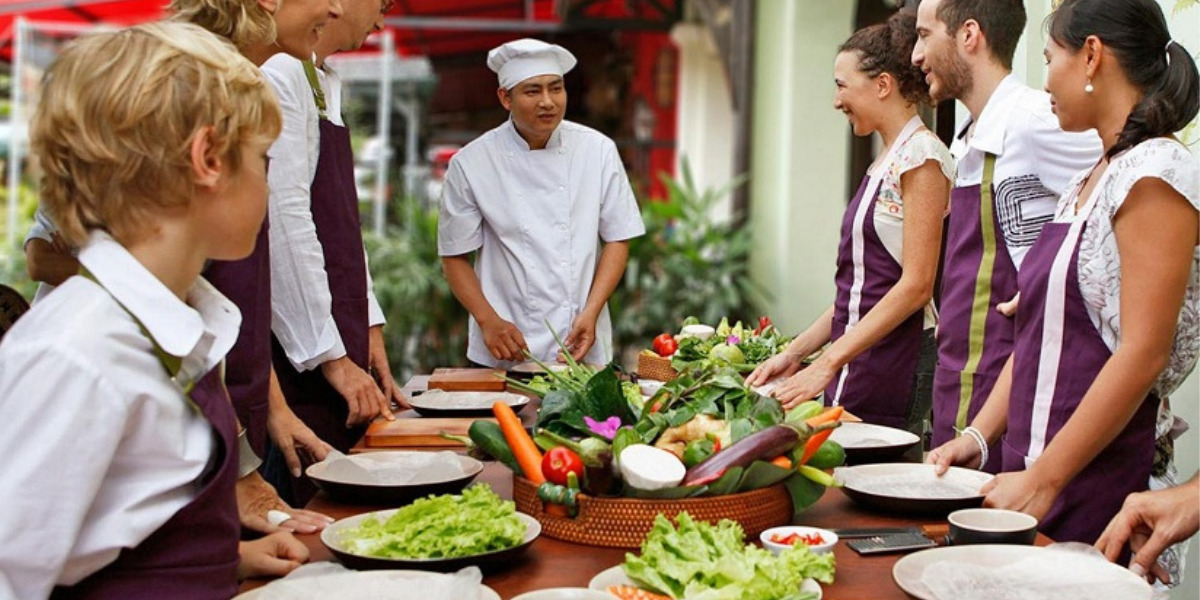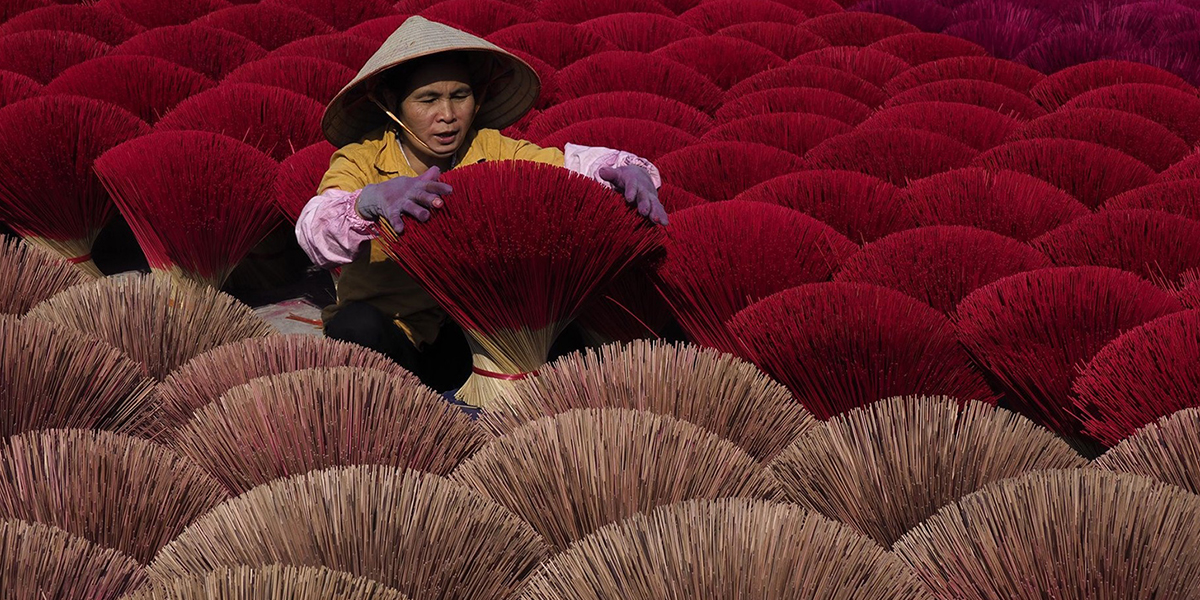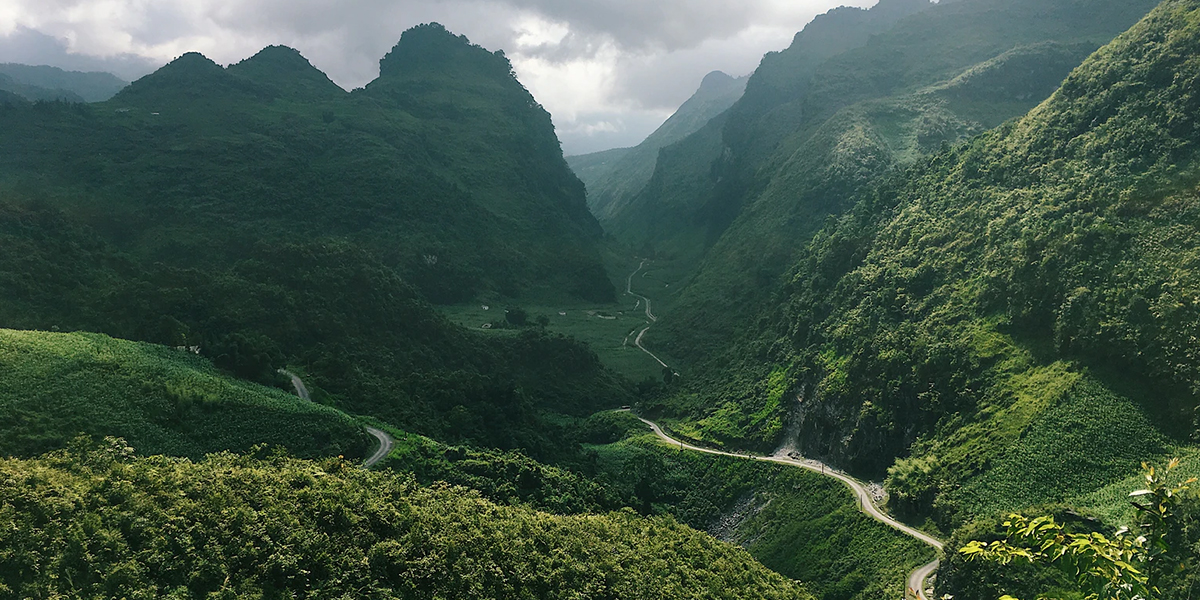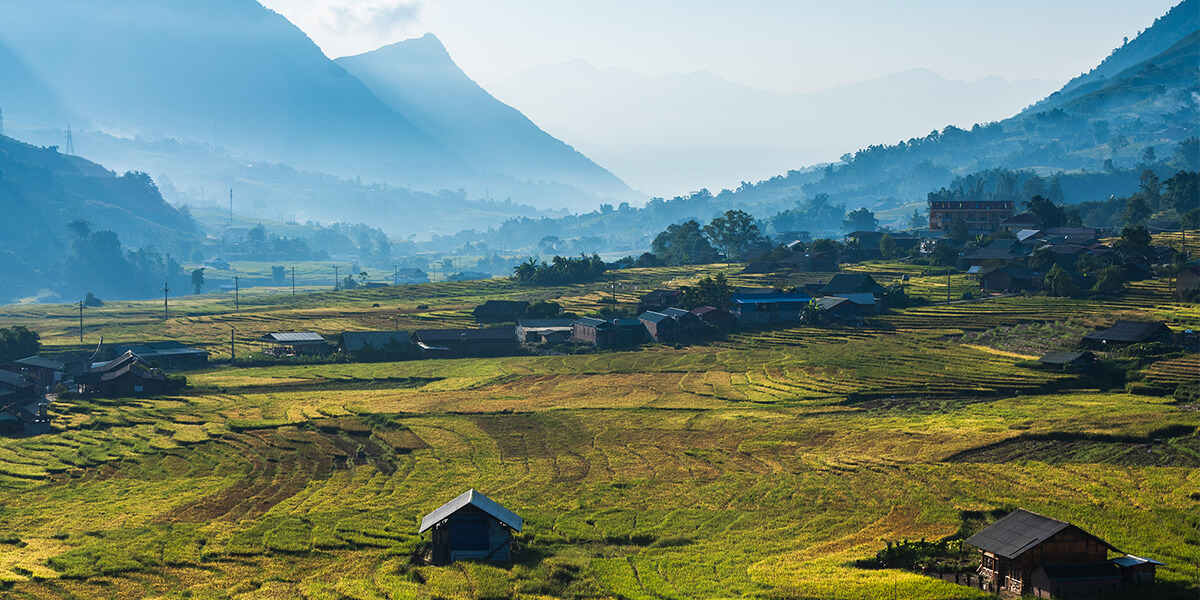Silk, one of the earliest discovered fibers, is made of protein fiber which is created from the silkworm cocoon after a long and meticulous process of cocoon reeling and weaving. Silk with outstanding features such as softness, smoothness, and not creasing easily has been chosen as a high-quality material for lots of products from clothes, scarf, interior items…
I - The origin of Vietnam silk fabric
Silk weaving was noted to appear in Vietnam from the 6th Hung King dynasty in Co Do village, Ba Vi district, Hanoi. Vietnam has many famous and old craft villages such as Van Phuc village (Ha Dong silk village), Nha Xa silk village, Tan Chau silk village, ...
Silk is mainly made from silk thread. This material, when made, will be natural, ivory-white, not pure white. This is also a fabric with good absorption, so it is cool to wear in summer and warm in winter. Silk is also smooth, cool, and light. Besides silk, Vietnam also has silk lotus (lotus silk). The producer will draw silk from the lotus stalks and weave them into fabrics, but this is only a unique fabric from the raw material but has not been widely popularized in Vietnam.
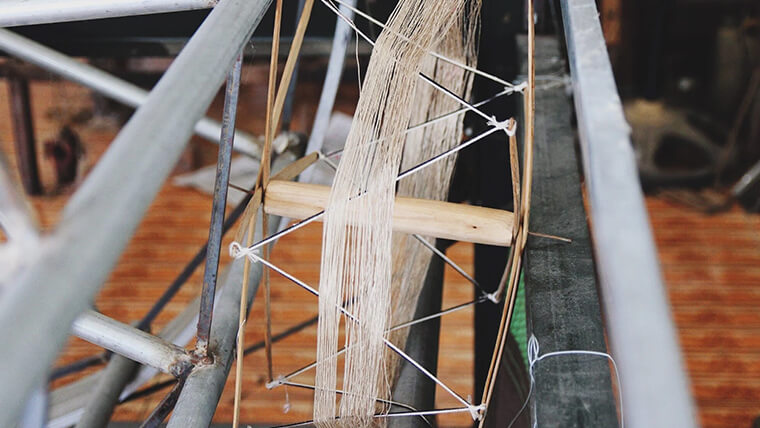
Lotus silk - Source: Kenh14
II - Production process of silk in Vietnam
1 - Silkworm raising
The best time for silkworms to grow is during cool weather, spring and autumn. Just raising for about 24 days, the silkworms will hatch. The food silkworms eat are mulberry leaves. After going through 4 molting times, reaching the maximum size, the silkworms will release the silk and form cocoons.
2 - Forming cocoons
The second stage of Vietnamese silk production is forming cocoons from silkworm. To get the silk smoothly, the farmer will take the jute stem to form 5 layers of open rectangular boxes for the silkworm to release the cocoon. Silkworm will release silk to create a cover to help fix its cocoon's nest, then it moves in the 8-shapes more than 3000 times, the length of the thread wrapped around the cocoon is a staggering number, 1000km.
3 - Silk nursing
Seven days after silkworms release silk to the cocoon, the nursing process will begin. This process must take place very quickly in 5 days to prevent the silkworms from hatching because then the cocoon layer will be broken and the silk is broken and cannot become yarn. To nurse the silk, farmers put the cocoon into boiling water to identify the silk termites and begin spinning.
4 - Silk weaving in Vietnam
Depending on the quality of the silk yarn, the silk weaving is also different. This weaving process produces many different silk fabrics, the direct criterion is the thin thickness, softness or hardness of the silk fabric.
5 - Dyeing
Dyeing is the last stage of silk production in Vietnam. This stage creates an aesthetic and beautiful look for the fabric. Before dyeing, the silk is soaked in boilded water to remove the adhesive on the surface. Raw materials for dyeing are mainly from nature such as leaves, barks, and roots. In addition to dyeing, depending on customer needs, silk fabrics are manufactured into different types of unique patterns.
III - The famous silk producing villages
Undergoing many ups and downs of history, nowadays the silk road Vietnam is stretching along the length of the country. In the north, some most famous silk villages are Co Do, Van Phuc, Nha Xa village which are located around Hanoi and the surrounding province in river delta land. In central Vietnam, Hoi An is the best place for buying Vietnam silk dresses and clothes. Head to the south, tourists can visit Tan Chau Silk Village in An Giang to explore more about silk production and products.
1 - The North
Co Do Silk Village - Hanoi
- Location: Co Do commune, Ba Vi District, Hanoi
- Duration: people said that it was formed when silk was introduced to Vietnam, the 6th Hung King dynasty.
- Product: Silk in Co Do from the past was tribute silk - a specialty fabric dedicated to the king, because of its luxurious beauty, fine-quality beauty.
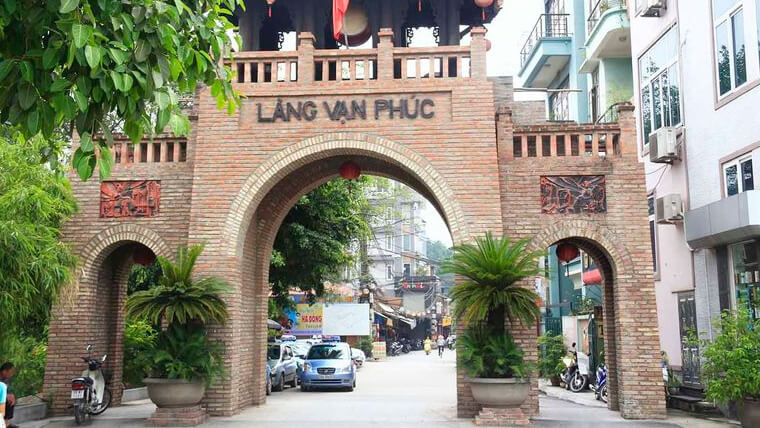
Van Phuc Silk Village - Source: Bestpricevn
Van Phuc Silk Village - Hanoi
- Location: Van Phuc Ward, Ha Dong District, Hanoi City.
- Duration: Over a thousand years ago.
- Product: Silk products here are beautiful with reasonable prices. Visitors can see four types of patterns in Van Phuc silk, which are plants, objects, animals and graphics. Silk products here are also diverse, from simple scarves, bags, ... to more complex products such as ao dai, clothes, ... Visitors can directly observe the weaving workshop, dyeing silk fabrics, doing some silk fabric production by hand. Another interesting activity in this silk village is going to Bon Art Cooperative, especially the workers who are disabled people, and together they make beautiful pictures out of cloth pieces.
Nha Xa Silk Village – Ha Nam Province
- Location: Nha Xa commune, Duy Tien district, Hanam province.
- Duration: near 600 years ago.
- Product: The silk here is soft, smooth, beautiful, and also very durable. Textile products are very rich, including silk, flower silk, linen, ... Nha Xa is also the first silk village to use materials from nature, including nau roots, Ant wings, Terminalia catappa leaves, or betel leaves... to dye silk to create beautiful, completely natural silk.
2 - Silk village Vietnam in the Central region
Ma Chau Silk Village - Quang Nam Province
- Location: Chau Hiep village, Nam Phuoc town, Quang Nam province.
- Duration: over 600 years ago.
- Product: Silk fabric here is restored from famous products in the country and the world. Ma Chau silk fabric is very bright, shiny and soft .
Bao Loc Silk Village - Lam Dong Province
- Location: Bao Loc city, Lam Dong province.
- Duration: over 1000 years ago.
- Product: This is the largest supplier of silk in the country. Silk in Bao Loc is of very high sophistication and quality. Coming to this silk village, visitors have the opportunity to admire the way to make unique silk fabrics, to better understand the hardships of silkworm raising and weaving.
3 - Vietnam silk fabric village in the South
Tan Chau Silk Village - An Giang Province
- Location: Tan Chau Town, An Giang Province.
- Duration: since the beginning of the 20th century.
- Products: Tan Chau silk has a special feature that is a fabric dyed from the fruit, which makes the black color of the silk fabric very shiny. Silk here is soft, durable, and highly hygroscopic.
Silk villages are one of the craft villages in Vietnam, where tourists can learn and experience the production process from the locals, buy or order some self-tailored silk products.
IV - Silk products in Vietnam
Silk has a very distinctive beauty. This is a suitable product to buy as a souvenir or gift from the beautiful country of Vietnam. Visitors can choose to buy the whole fabric that has not been sewn, or choose the main products from silk such as Ao Dai (Vietnamese long dress), silk robes, silk scarf or silk cravat, clothes, dress and other accessories ... meticulousness and industriousness of craftsmen. In addition to fashion items, silk is also used as raw materials to create beautiful silk paintings or silk lanterns in Vietnam. One of the most famous places where you can see the silk lanterns and lots of silk products is Hoi An in central Vietnam. Silk made from Vietnam is very famous in the international market, conquering the most difficult countries like France, Italy, India, Japan, …
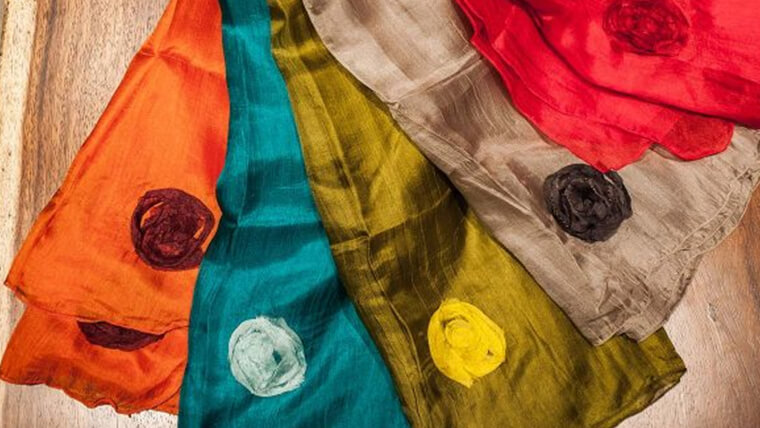
Vietnam silk scarf - Source: Hanhsilk
Silk is easily creased and difficult to straighten, so you should preserve it by the following:
- Dry cleaning.
- If hand washing, use shampoo or bath soap to keep the product from deforming.
- After washing, do not squeeze too hard, the item will be creased.
- Do not use bleach when washing clothes.
- Avoid drying direct sunlight, the product will be brittle and yellow.
- To keep the product for a long time, do not put in plastic bags that will easily tarnish but put them in cotton pillowcases.
V - Where to buy silk in Vietnam
In Vietnam, you can buy silk and some products from silk like clothing, scarf, tie, accessories,...from the silk villages mentioned above. In addition, the other places where you can easily visit and buy are:
Vietnam silk house
- Address:
149B Hai Ba Trung Street, Ward 6, District 3, Ho Chi Minh City
111 Xuan Thuy Street, Thao Dien Ward, District 2
34 Quang Trung Street, Hoan Kiem Distrcit, Hanoi
2A Tran Phu Street, Dalat City
- Website: https://www.vietnamsilkhouse.com/sale/
- Tel: 091 8801583 / 091 814 2455 / 098 7537 678
Ngoc Diep Silk
- Address: 9 Hang Hanh Street, Hoan Kiem District, Hanoi
- Tel: 024 3824 7215
Silky Vietnam
- Address: 43 Hang Hom Street, Hoan Kiem District, Hanoi
- Tel: 0898 083 735.
Vietnam silk price goes well with quality of fabrics, for more details of price, please visit the websites of silk houses or silk shops.
Silk is a typical product of Vietnamese culture. When you come here to travel here, do not forget to buy products made from Vietnamese silk, it will be a reminder of the interesting and unique experience of this beautiful S-shaped strip of land.


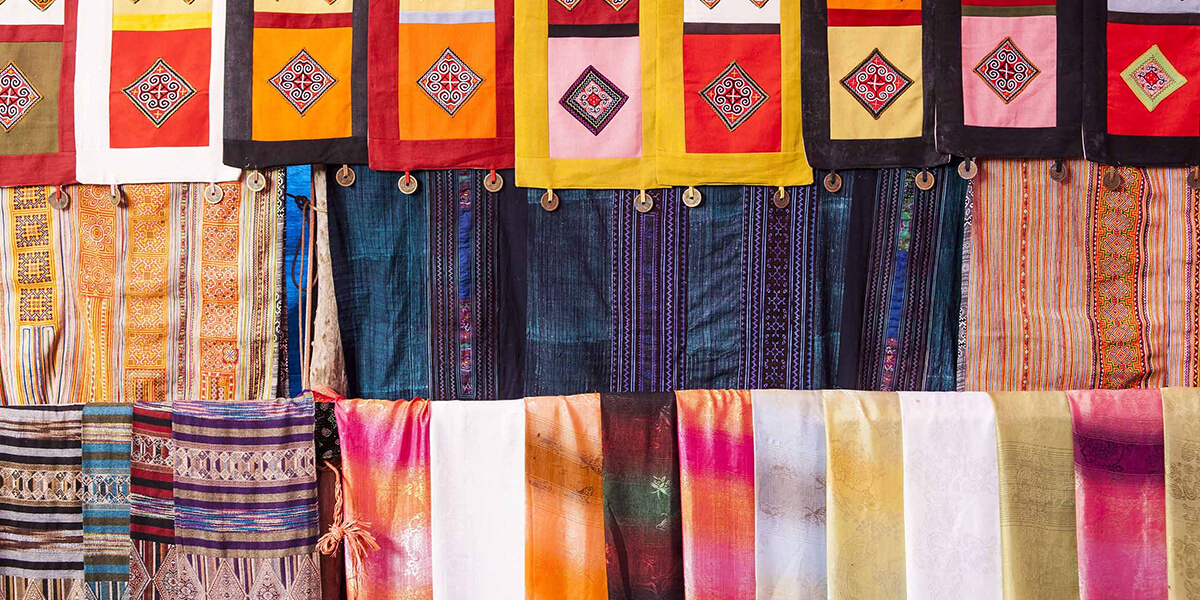




 — Quan Nguyen
— Quan Nguyen



















